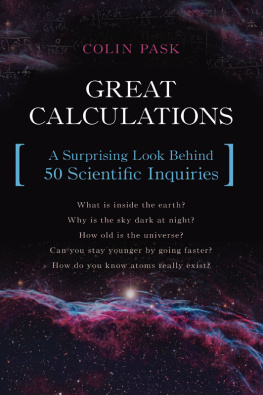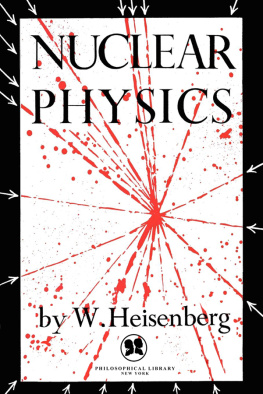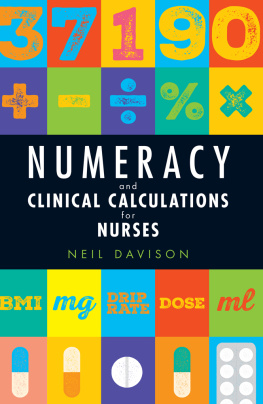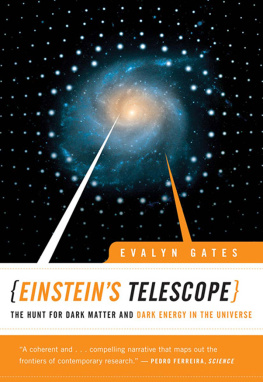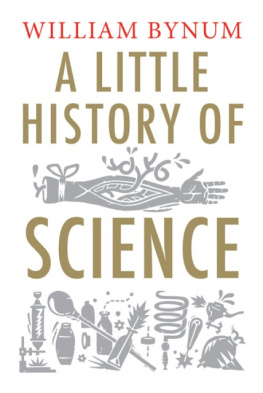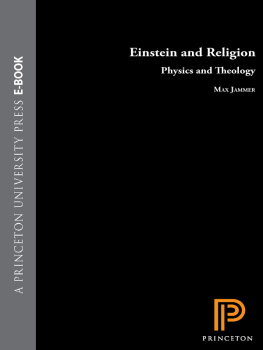ALSO BY COLIN PASK
Magnificent Principia
Math for the Frightened

Published 2015 by Prometheus Books
Great Calculations: A Surprising Look Behind 50 Scientific Inquiries. Copyright 2015 by Colin Pask. All rights reserved. No part of this publication may be reproduced, stored in a retrieval system, or transmitted in any form or by any means, digital, electronic, mechanical, photocopying, recording, or otherwise, or conveyed via the Internet or a website without prior written permission of the publisher, except in the case of brief quotations embodied in critical articles and reviews.
Cover image (top) Bigstock
Cover image (bottom) Media Bakery
Cover design by Grace M. Conti-Zilsberger
Inquiries should be addressed to
Prometheus Books
59 John Glenn Drive
Amherst, New York 14228
VOICE: 7166910133
FAX: 7166910137
WWW.PROMETHEUSBOOKS.COM
19 18 17 16 15 5 4 3 2 1
The Library of Congress has cataloged the printed edition as follows:
Pask, Colin, 1943
Great calculations : a surprising look behind 50 scientific inquiries / by Colin Pask.
pages cm
Includes bibliographical references and index.
ISBN 978-1-63388-028-3 (pbk.) ISBN 978-1-63388-029-0 (e-book)
1. MathematicsMiscellanea. I. Title.
QA99.P385 2015
510dc23
2015001967
Printed in the United States of America


My interest in the calculations discussed in this book goes back fifty years, and over that time a great many colleagues have helped and inspired me. My doctoral-thesis supervisor, John M. Blatt, was a pioneer in the use of computers for tackling physical problems, and his enthusiasm and wisdom set me off on my career. Barry Ninham met my wife and me when our boat arrived in Australia fifty years ago, and he has been a friend and supporter ever since. As a highly skilled applied mathematician, he will recognize his influence on me with the appearance of Bessel functions in this book. The wonderful Annabelle Boag has produced the magnificent figures that grace this book; I would be lost without her cheerful support and highly professional assistance. Peter McIntyre is a meticulous reader of manuscripts, and I thank him for much help and advice. Connie Wintergem has supported me in much of the research for this book. My beautiful wife Johanna has shared life with me for fifty years, and this book owes more than I can say to her love and support.

Science combines observation, experiment, and theory. The observational and experimental sides are probably better known and more readily appreciated. The spectacular observations of astronomers, for instance, are often in the news. Many people have read about or have seen television reports on the 2012 experiment at the Large Hadron Collider in which particles were smashed together to reveal the existence of the Higgs boson. But it is likely that few of these people understood why the experiment was carried out and what the result means for the future of science. It is the interplay between experiment and theory that gives sciences its coherence, integrity, and power. This book aims to improve the understanding of the role played by theory in science. It complements the many books attempting to identify science's most influential experiments by describing a selection of its great calculations.
The calculations described in this book are mostly relatively simple (at least in principle, if not always in practice) but still of major significance. I believe they are accessible to the ordinary reader; occasionally the more technical details are given in separate sections for those wishing to see them. In any case, it is usually the context which is of major importance: Why was the calculation made? What was the result? What was the effect of the calculation on the progress of science? Did the result have broader implications for society and the future of mankind? Answers to questions such as these reveal how calculations are both important and interestingand also sometimes controversial, as the predictions for climate change illustrate.
The calculations are grouped under broad subject areas such as the solar system or the building blocks of matter. In each group they are presented in chronological order, and in this way readers may learn something of the history of science (although the different parts of the book may be and which may be of particular interest to those readers who have grown up entirely in the computer age. We shall also meet some of the great characters involved, from Archimedes to Einstein, and discover the intriguing stories surrounding certain calculations.
By reading about the various calculations I hope that you will come to better appreciate the vital link between experiment and theory.
It will be obvious that the choice of calculations to be described reflects my personal interests, background, and views of science. It was not easy to keep to such a restricted number of examples (and some extras have briefly sneaked in as honorable mentions). I expect some readers may be upset not to find their personal favorites on my list. Even more provocative may be my final choice of the ten calculations most worthy of the label great. However, that is part of the fun. I stand ready to be informed and educated about the superior qualities of other worthy candidates I have excluded.

- How did a parson warn us about the problems of overpopulation?
- How mathematically advanced were the ancient Babylonians?
- What could have been another eureka moment for Archimedes?
- What did Fibonacci do apart from showing how rabbit populations get out of control?
- How do you double the life span of an astronomer?
- Can you add up an infinite number of things?
- How did Gauss find a mysterious formula for prime numbers?
- How big is the earth?
- How old is the earth?
- What is inside the earth?
- How did Galileo mathematically shoot a cannon?
- Which nineteenth-century calculation used an analogue computer that was then used in planning the allies D-Day landings in France?
- Which masterpiece dominated astronomy for a thousand years?
- How did Kepler battle with Mars?
- Why is the link between a falling apple and a falling moon so important?
- How do you weigh the planets?
- How did Halley predict the return of his comet?
- How do you find a new planet without using a telescope?
- How far away is the sun?
- Which calculation led Einstein to say that for a few days, I was beside myself with joyous excitement?
- Why is the sky dark at night?
- How old is the universe?
- How does carbon-based life on Earth depend on a quirk of nuclear physics?
- How do we know there is lots of dark matter in the universe if we can't see it?
- How did a parson's dark stars turn into black holes?

